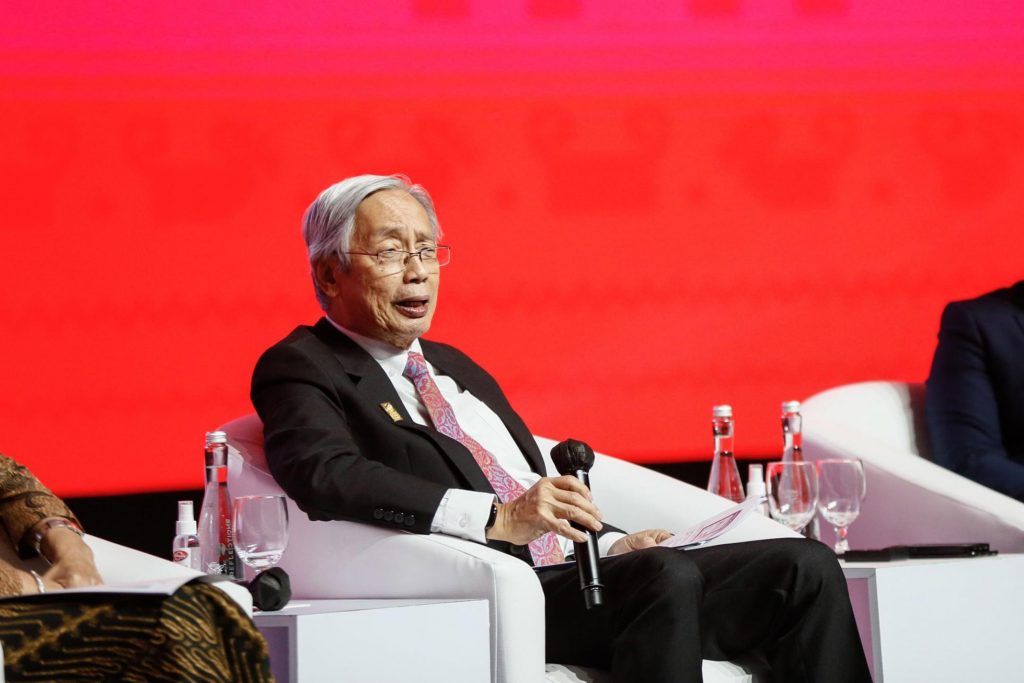As Asia worries about a 2008 global crisis redux, signals from the Philippines offer hope the region is better positioned than thought to withstand shocks from the West.
Look no further than Philippine Central Bank Governor Felipe Medalla insisting his team has no intention of pausing its most assertive monetary tightening cycle in two decades. As Medalla told Bloomberg on March 30, the May policy meeting seems “too early” to throttle back “unless we actually see a price fall.”
Significantly, Medalla made his comments on the sidelines of the Association of Southeast Asian Nations forum in Bali, Indonesia. There, the Bangko Sentral ng Pilipinas leader said his team remains “cautious” and looking for signs of “enough low month-on-month inflation, to give the public confidence that the BSP forecast of inflation averaging 2.9% is quite likely,” the central bank’s estimate for 2024.
I say “significantly” because we can assume that Medalla has been garnering intelligence from other ASEAN region peers in Bali about risks from banking troubles in the West. Worries about another 2008-like crisis have been festering since the collapse of Silicon Valley Bank and New York-based Signature Bank and Credit Suisse having to be saved by UBS.
Yet Asia isn’t panicking the way many economists seemed to expect just a few weeks ago.
As Medalla said in a separate exchange with reporters this week that the “Philippine banking system is prepared to withstand shock from banking turmoil abroad.”
The “big question,” says economist Louis Gave at Gavekal Research, “is whether we are experiencing the early rumblings of a 2008-style banking panic and credit crunch that ends up sucking in the whole world. The message from markets this week has generally been sanguine, however, it goes without saying that the crisis of 15 years ago took many months to properly unfold.”
But Gave’s “preliminary view that this crisis mostly looks like a U.S. problem that the rest of the world can substantially duck.”
Let’s hope so, as chatter turns to Charles Schwab Corp. and its $7 trillion of assets across its businesses. Fears that some of America’s behemoths might stumble are the last Asian policymakers want on their radar screens.
Chang Wei Lang, foreign exchange and credit strategist at DBS, argues that interbank contagion risks from the U.S. and Europe are “quite small” for banks in the Philippines and peers around Asia that aren’t too highly dependent on offshore funding.
In Malaysia, Central Bank Governor Nor Shamsiah Mohd Yunus this week called the impact of rising interest rates orderly thus far, citing few telltale signs tightening has been excessive.
“Our banks are resilient, and we do not expect what we see in other countries to happen here,” she says.
Bank Negara Malaysia, she says, is “not on any pre-set path” and is carefully assessing the market fallout from higher rates. “It’s a delicate balancing act,” she notes. “We need to remain agile and respond to any changes.”
One of the biggest risk factors, of course, is U.S. rate hikes. Federal Reserve Jerome Powell’s team in Washington seems set on continuing its most aggressive tightening cycle since the mid-1990s. It added 25 basis points to the Fed funds rate on March 22, bringing it to the 4.75% to 5% range, even amidst nail-biting over SVB, Credit Suisse and fears of other institutions falling into trouble.
On Thursday, three top Fed officials indicated that more rate cuts could be on tap as inflation rises at a 6% pace. “Inflation remains too high, and recent indicators reinforce my view that there is more work to do to bring inflation down to the 2% target associated with price stability,” Fed Bank of Boston President Susan Collins said.
All this leaves Asia in a tough spot. The last time the Fed tightened this aggressively was between 1994 and 1995, when it doubled short-term rates in 12 months. Over time, the dollar’s powerful rally made currency pegs from Bangkok to Jakarta to Seoul impossible to maintain. That resulted in the 1997-1998 Asian financial crisis.
As the fallout from the SVB debacle unnerves markets, says Columbia University economist Jeffrey Sachs, “we recall with a shudder two recent financial contagions: the 1997 Asian financial crisis, which led to a deep Asian recession, and the 2008 Great Recession, which led to a global downturn. The new banking crisis hits a world economy already disrupted by pandemic, war, sanctions, geopolitical tensions, and climate shocks.”
The good news is that, as the Philippines shows, many of Asia’s banks are reasonably well-capitalized relative to 1997 and 2008. And China’s post-Covid rebound, at a moment when India is growing 6%-plus, sure doesn’t hurt.
“My point” says BSP Governor Medalla, “is we have enough tools and our main tool, the interest rate, does not have the undesirable effect of destroying the balance sheet of banks or significantly reducing GDP growth.”
As the Philippines suggests, Asia may surprise many for its ability to stand its ground in 2023.

